Is your electric guitar playing missing that extra spark?
From nifty finger techniques to clever gear hacks, these 10 tips will amplify your guitar experience in ways you never imagined.
Mastering Your First Chords
ONE
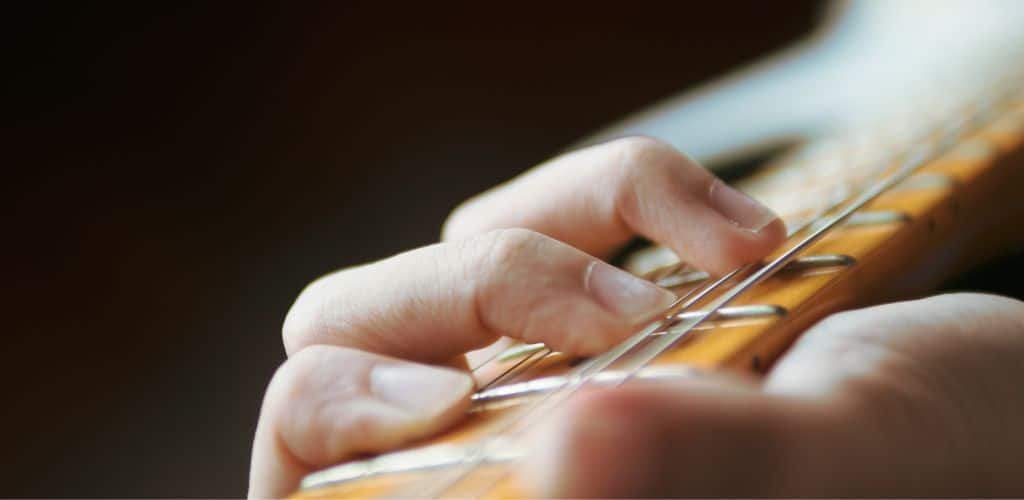
Starting with basic chords is like learning your ABCs before trying to write a big, fancy book. Open chords like E, A, D, G, C, Em, and Am will be your BFFs here.
The trick is to practice moving between chords smoothly – nobody wants to hear a clunky, robotic performance. Focus on putting your fingers in the right spots and making tiny movements when you switch chords.
Here’s a pro tip: Use a metronome to keep a steady beat and gradually speed up. Before you know it, you’ll change chords like a total rock legend!
Strumming Patterns to Impress
TWO
Begin with downstrokes to create a strong, steady rhythm. Then, throw in some upstrokes to spice things up!
One cool pattern to try is D-D-U-U-D-U (Down-Down-Up-Up-Down-Up). This will have you sounding like a guitar guru in no time. Play around with different levels of loudness – gentle touches for verses and bold strums for choruses.

Fretting Without Fretting
THREE

To produce cleaner notes, position your finger just behind the fret wire. Apply slight pressure without squeezing too hard. Over-gripping can cause two problems: sore fingers and out-of-tune notes.
Practice creates muscle memory, so make it part of your practice routine.
Another trick is minimizing finger movement. Keeping your fingers close to the fretboard ensures quicker transitions between chords and notes. Speed and precision? Double win.
Picking the Right Way
FOUR
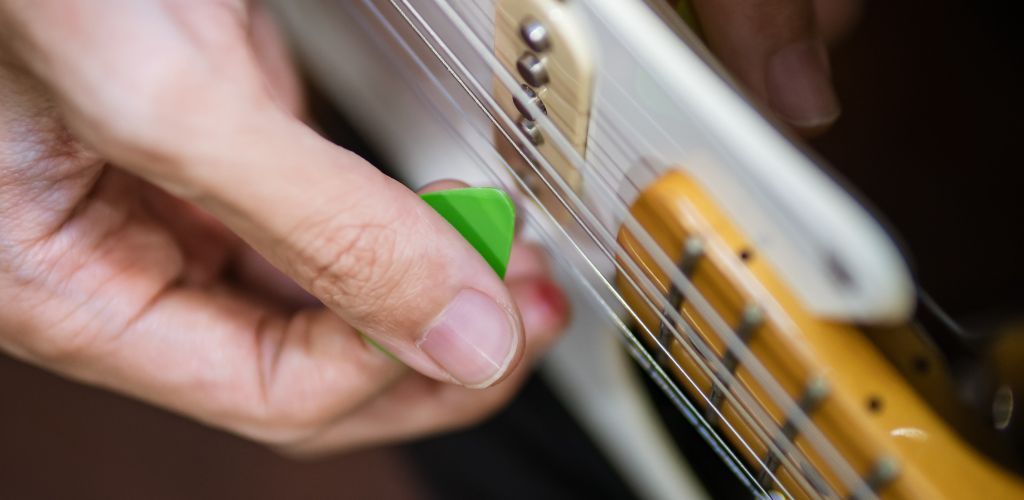
Your picking technique can make your guitar sound awesome or awful. Hold your pick between your thumb and index finger, tight enough. A floppy pick means sloppy playing, but a tight grip makes moving hard.
Find the perfect balance! Tilt your pick towards the strings so it slides smoothly, and each note sounds crystal clear. Alternate picking (down-up strokes) is a must for playing fast.
Playing with a Metronome:
A Love-Hate Relationship
FIVE
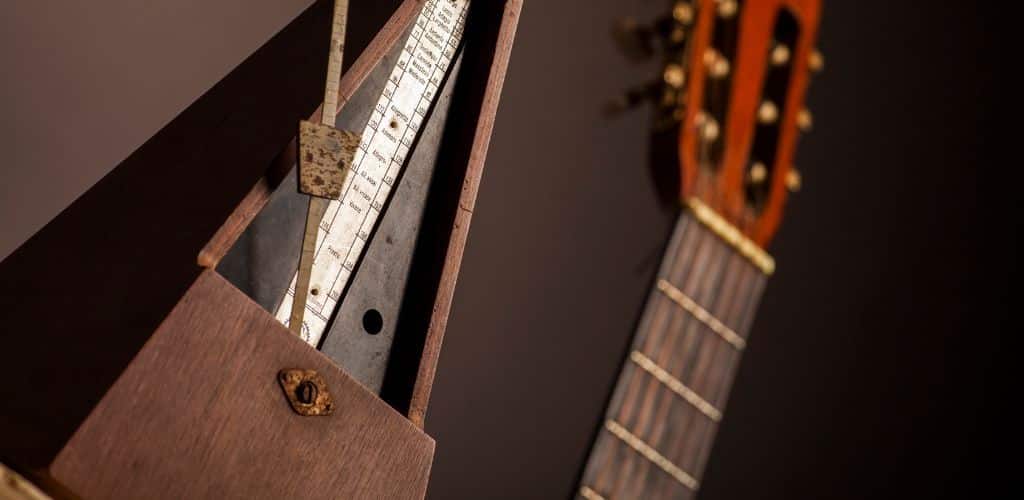
A metronome is like that annoying friend who’s always right: it’s frustrating, but you can’t live without it! Use it to improve your timing and precision.
Start slow; play scales or easy riffs along with the clicks, and gradually speed up. Before you know it, you’ll be playing like a human clock!
Challenge yourself—can you stay on the beat at 120 BPM for an entire song? Make it into a game. Yeah, it’s boring, so you’ll probably want to throw the metronome out the window.
But if you stick with it, you’ll turn into a timing superhero. Just think, the metronome might become your best buddy – or at least, the most useful one you’ve got!
Harnessing the Power of Open Tunings
SIX
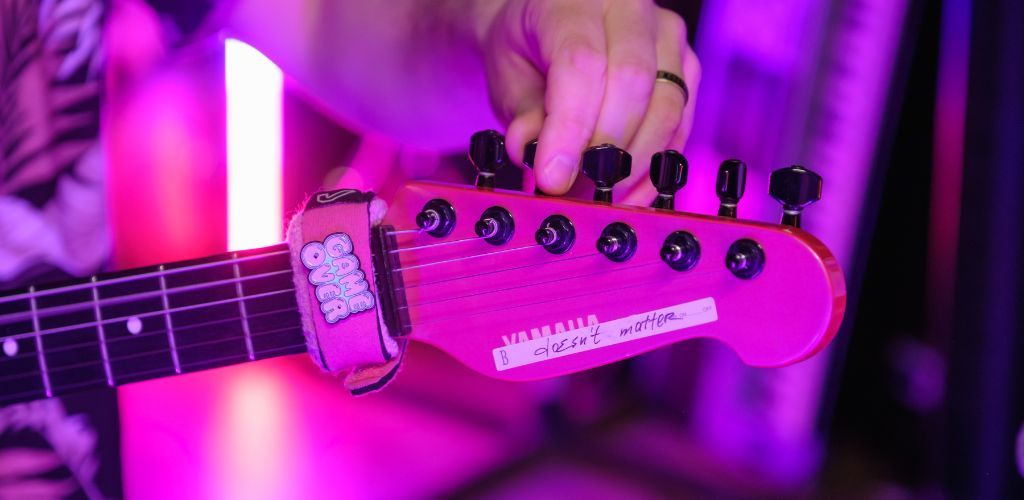
Open tunings can be a game-changer. By adjusting the tuning pegs, players can create resonant and rich sounds that standard tuning can’t provide. It’s like giving your guitar a whole new personality.
Open D and Open G are popular choices in genres like blues and slide guitar. There’s something magical about strumming an open chord and hearing every string ring out in harmony. For those willing to experiment, open tunings can lead to unexpected, beautiful discoveries.
Capo on the Loose: Instant Key Changes
SEVEN

The capo is a small gadget that packs a big punch. Place it on any fret, and you can play in a different key without changing chord shapes. It’s a lifesaver for singers whose vocal range doesn’t quite match the song’s original key.
A capo can also simplify complex fingerings. For instance, playing a song in F major using open chord shapes suddenly becomes effortless. Capos make life easier and your performance smoother.
Invest in a Quality Strap
EIGHT

Strap locks are the unsung heroes of guitar safety. These nifty gadgets securely fasten your strap to your guitar, preventing accidental drops.
Strap locks come in various styles, like push-button and screw-on. They’re easy to install and give you peace of mind. You’ll be grateful for their sturdy clutch when you’re thrashing about on stage like a madman. Invest in a good pair; bye-bye to sudden guitar tragedies!
DIY Repairs: The Handy Guitarist Toolkit
NINE
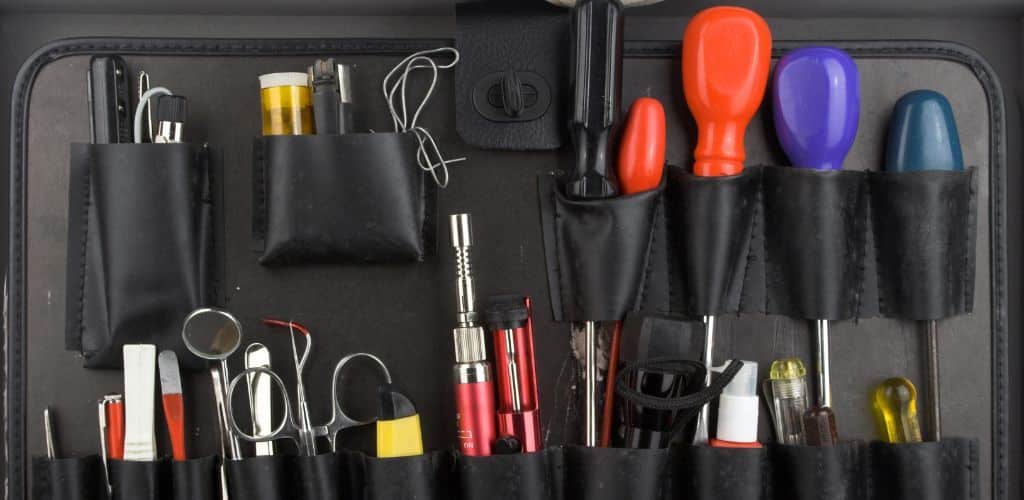
For the handy guitarist, a small toolkit is a lifesaver. Essential items include a set of screwdrivers, a string winder, wire cutters, and a tuner. Keep these handy, and you’ll handle most minor repairs with ease.
Accidents happen – if a string breaks, don’t panic! With your toolkit, restringing is a cinch. The trusty screwdriver can fix issues like loose input jacks or strap buttons.
And don’t overlook the power of a reliable multimeter to check your electronics. Armed with these tools, you’ll keep your guitar in top shape, all while feeling like a rock star repairer.
Engage in the Guitar Community
TEN
Staying plugged into the guitar community is key for any guitarist. There’s always something fresh and inspiring, from breaking guitar news to legendary interviews.
Find exciting updates on new gear, upcoming concerts, and trending techniques online. Websites like Guitar World and forums like Reddit’s r/guitar are goldmines.
Follow guitar brands, artists, and instructors on Twitter and Instagram. It’s like having guitar gossip at your fingertips—without the awkward coffee meet-ups.
Check out platforms like YouTube and Patreon, where experts like Paul Davids drop knowledge bombs.
These insights often come with practical lessons on technique, making them a double win and getting to learn from the legends.
Hacks to Elevate Your Playing

The secret key is practicing daily, using these tips, and never losing that sense of curiosity.
Music isn’t just about technique but passion and trying new things. By mixing in these hacks, musicians can unlock hidden levels in their musical journey.
So, grab that guitar and let the strumming, bending, and picking extravaganza begin!
It’s a wild, electric world out there, and your guitar is your trusty sidekick on this melodic adventure.
Keep the laughter coming, and let those strings tell your story!
Wait there’s one last hack… Get a good electric guitar! Below are the ones we recommend.
Dean MD X Quilt Maple, Trans Blueburst

FEATURES: Number of Frets: 22
OTHER INFO: Fingerboard Radius: 12.00’’
- Striking Trans Blueburst quilt maple top.
- DMT-designed pickups for versatile tones, especially in rock.
- Minimalist controls on MDX.
- Offers features of higher-end models at an intermediate price.
- Requires careful string changes and adjustments.
- Mahogany body may result in a slightly heavier feel.
When you click ‘Check Price’, you’ll see there are loads of great places to buy this item. Our personal favorite is Sweetwater for the US, and Thomann and Gear4Music for the UK & Europe.
They are the largest music retailers, with excellent customer service, competitive prices, really fast shipping, and the longest guarantees.
The professional musician who wrote this article combined many things,
from the product build, manufacturer’s reputation through to feedback
from other users, to create our famous TedScore™.
Ibanez GRX40 GIO, Black Night
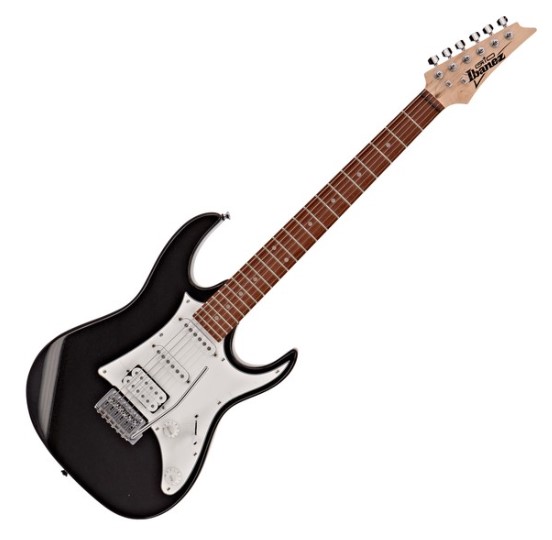
FEATURES: Jatoba fretboard
OTHER INFO:Bridge humbucker, neck and middle single coils for a wide range of sounds
- Infinite tone possibilities with three diverse pickups
- Prime playability with a comfortable GRX maple neck
- Superb tuning stability thanks to the T106 tremolo bridge
- High-quality construction with poplar body and chrome hardware
- Affordable yet offers features of more expensive models
- Occasional static noise and a slightly abrasive fretboard.
- Frequent use of the tremolo bar may result in tuning stability challenges.
When you click ‘Check Price’, you’ll see there are loads of great places to buy this item. Our personal favorite is Sweetwater for the US, and Thomann and Gear4Music for the UK & Europe.
They are the largest music retailers, with excellent customer service, competitive prices, really fast shipping, and the longest guarantees.
The professional musician who wrote this article combined many things,
from the product build, manufacturer’s reputation through to feedback
from other users, to create our famous TedScore™.
Yamaha Revstar Element RSE20, Black

FEATURES: Number of Frets: 22
OTHER INFO: VH3n (Humbucker / Alnico V) neck and VH3b (Humbucker / Alnico V) bridge pickup
- Engaging and playable design with excellent resonance.
- Innovative Dry Switch feature for tonal versatility.
- Neck reinforced with graphite, ensuring stability and durability.
- Affordable pricing and significant modding potential.
- Impeccably crafted guitars with tidy builds
- Unique, substantial neck may not suit players preferring thinner profiles.
When you click ‘Check Price’, you’ll see there are loads of great places to buy this item. Our personal favorite is Sweetwater for the US, and Thomann and Gear4Music for the UK & Europe.
They are the largest music retailers, with excellent customer service, competitive prices, really fast shipping, and the longest guarantees.
The professional musician who wrote this article combined many things,
from the product build, manufacturer’s reputation through to feedback
from other users, to create our famous TedScore™.











Lewis Turner, your section on open tunings was a revelation. I’ve dabbled with them before, but the way you break it down has inspired me to experiment more. Open C here I come! Anyone got tips for transitioning between tunings smoothly?
Adding to ChordGenius, some clip-on tuners now have settings for open tunings. Worth the investment!
Felicia93, the key to smooth transitioning is practice and a good tuner! Also, familiarize yourself with the sound of each tuning by ear, it’ll make it quicker.
Investing in a quality strap might not seem like a priority, but it’s a game changer for sure. Comfort and security while playing can’t be underestimated. Though, I’ve seen plenty argue that it’s more about the guitar itself than how you hold it. Thoughts?
playing with a metronome is a love-hate thing for sure. gets tedious but i know it’s for the best. anyone else feel like it drains the fun out of jamming sometimes? or maybe it’s just me getting impatient ha.
Lewis Turner, fantastic article! Particularly enjoyed the section on open tunings – it’s a game changer for someone diving into jazz. I’ve found that experimenting with different tunings not only expands your musical vocabulary but also inspires creativity. Anyone else here enjoying the exploration of unconventional tunings?
Inspiring exchange, truly. Must explore more.
Absolutely, JazzHandJen. Open D has been my go-to lately. It’s like unlocking new songs with the same old fingers.
The section on DIY Repairs and the handy guitarist toolkit is spot on. Many players overlook the importance of maintenance. A well-kept guitar makes a world of difference in the sound. Great advice!
Totally agree, but don’t forget to mention not to overdo it with the string tension. Seen too many necks warped that way.
hey, anyone got tips for easier fretting? struggling a bit over here and this article got me thinking maybe im doing it all wrong lol
hey there! loved the bit about strumming patterns. quick q: any easy pattern you’d recommend for total newbies? something catchy but simple to master. thanks a bunch!
picked up my first guitar last year, totally can relate to the love hate relationship with a metronome lol. its tough but helps.